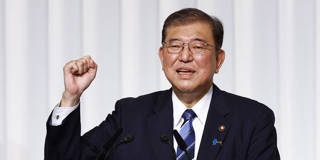Japan’s economy undoubtedly suffers when the yen is too strong, which is why the monetary expansion that was launched in 2013 was so welcome. But weaker is not always better, and today’s exchange rate is simply too low.
TOKYO – Last month, returning to Japan for the first time since the COVID-19 pandemic, I was struck by how significantly prices had increased. In February 2020, a simple lunch in downtown Tokyo cost about JP¥1,000, then the equivalent of about $10; today, it costs more like JP¥2,000. To some extent, this mirrors the experience in the United States, where, even as inflation moderates, prices remain well above their pre-pandemic levels. The difference is that Japan has also experienced a sharp currency depreciation, which benefits foreign visitors: that JP¥2,000 bill translated to just $13.

TOKYO – Last month, returning to Japan for the first time since the COVID-19 pandemic, I was struck by how significantly prices had increased. In February 2020, a simple lunch in downtown Tokyo cost about JP¥1,000, then the equivalent of about $10; today, it costs more like JP¥2,000. To some extent, this mirrors the experience in the United States, where, even as inflation moderates, prices remain well above their pre-pandemic levels. The difference is that Japan has also experienced a sharp currency depreciation, which benefits foreign visitors: that JP¥2,000 bill translated to just $13.